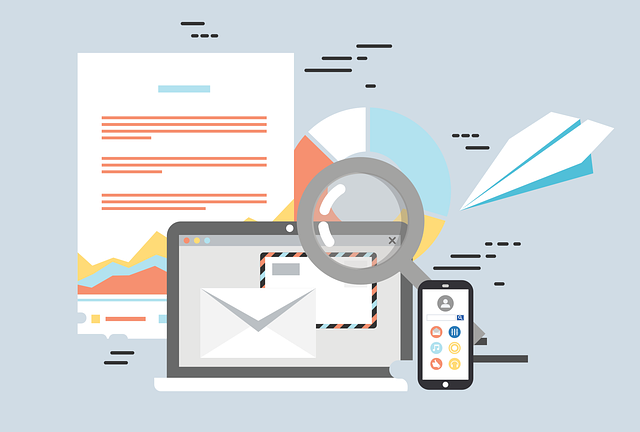Newsletter and financial statements assignment 2020
Assignment 1: Newsletter and financial statement
Changes, developments and news in the financial reporting environment
It is newsletter that has aimed to update the employees on the changes, development and news related to financial reporting system.
It will be helpful for the companies and accountant to prepare the financial statement in the accurate manner.
The main aim of this newsletter is to update the employees of the account departments over the time period 1 May 2018 to 31 July 2018.
This newsletter will also be helpful for the employees of accounting firm to overcome the various technical, regulation and monitoring issues.
Changes, development and news of financial reporting
In the context of this, it is found that AASB updated its policies for public sectors companies in the context of the more transparency.

This news has been seen 2 may 2018 and in this, it is found that AASB standard updated for the public companies. The new standards depict public companies required to more transplant and accountable in concerning the disclosing the financial statement.
They should clearly communicate budget and provision for expenses with the stakeholders (Stadler & Nobes, 2018). In the same concern of this, on 17 may, on the website of AASB, it is found that a new compilations for reporting periods is update for beginning on or after 1-1-2018 (Australian government, 2018).
In the same way, on 30 may, AASB also updated with news as open for registration: webinar – options for replacing SPF S. in this, it is found that this webninar forms is the part of the AASB’s consultation on how to introduce in Australia.
In the next month, 4 June, the chairman Kris Peach organized a meeting in which it discussed on the issues in the reporting system and provided solution for this.
In this meeting it was also communicated for the upcoming accounting standards on financial accounting (Keshk et al 2018).
Furthermore, on 21 June, action has been seen in the meeting of 14 June. AASB shown the progress on project as the Implementation Guidance for NFP Public Sector Licensors, Reduced Disclosure.
In the next day, it has been read that webinar as part of consultation has been replaced by the reporting concept.
After this, a big news has been seen in the Australian Accounting standard board that the chair man of board has appointed the IASB management commentary consultative group.
The purpose of this action of the Board is to provide the strength to the ability of the AASB.
At the same time, IASB management commentary consultative group will also support and provide the suggestion to AASB to development and update the accounting standard in the financial accounting. In the news field of the AASB, it has also seen that AASB updated the full commitment goal of a single and high quality for the international accounting standard.
The main purpose of this update is to raise the fairness and improve the accounting policies of the international firms that are working in Australia (Carter & Warren, 2018).
On the basis of the above discussion, it can be concluded that the main purpose AASB to bring the continues improvement in the accounting policies of the country.
Hence, it can be said that AASB is involved in the bringing changes and improvement in the accounting standard that applied of the public and private companies. It is important to enhance the transparency and accountability.
At the same time, it is also significant to accountant of the companies to get the updated with the new standard in the accounting standard.
| Trial Balance | |||
| Particular | Debit | Particular | Credit |
| Marketing expense | 6,23,000 | Sales of goods | 1,22,30,000 |
| Salaries and wages | 27,40,000 | Interest income | 7,000 |
| Administration expenses | 1,43,000 | Bank loan | 4,00,000 |
| Annual leave expense | 2,10,000 | Trade creditors | 6,15,000 |
| Doubtful debts expense | 62,000 | Provision for annual leave | 2,00,000 |
| Depreciation expense | 285000 | Current tax liability | 1013700 |
| Interest expense | 64,000 | Share capital | 50,00,000 |
| Other borrowing expenses | 6,000 | Provision for warranty | 55,000 |
| Other expenses | 95,000 | Allowance for doubtful debts | 2,19,000 |
| Warranty expense | 64,000 | ||
| Income tax expense | 871500 | ||
| Cost of sales | 46,85,000 | ||
| Deferred tax asset | 142200 | ||
| Cash on hand | 41,000 | ||
| Cash management account | 1,93,000 | ||
| Trade debtors | 32,76,000 | ||
| Raw material inventory | 6,24,000 | ||
| Finished goods inventory | 12,50,000 | ||
| Land | 5,00,000 | ||
| Buildings | 8,70,000 | ||
| Accumulated depreciation – buildings (30000) | 30000 | ||
| Plant and equipment | 23,45,000 | ||
| Accumulated depreciation – plant and equipment (255000) | 255000 | ||
| Patents | 1,50,000 | ||
| Dividends paid | 5,00,000 | ||
| 1,97,39,700 | 1,97,39,700 | ||
| Journal Entry | ||
| Particular | Debit | Credit |
| Depreciation ac | 285000 | |
| Building ac | 30000 | |
| Plant and Equipment | 255000 | |
| (Depreciation is charged) | ||
| Profit and Loss account ac | 285000 | |
| Depreciation ac | 285000 | |
| (Depreciation is transferred in P&L) | ||
| Income Tax Account | 871500 | |
| To bank account | 871500 | |
| (Income tax paid) | ||
| Profit and Loss account | |||
| Particular | Amount | Particular | Amount |
| Cost of sales | 46,85,000 | Sales of goods | 1,22,30,000 |
| Gross profit | 75,45,000 | ||
| Marketing expense | 6,23,000 | Gross profit transferred | 7545000 |
| Salaries and wages | 27,40,000 | Interest income | 7,000 |
| Administration expenses | 1,43,000 | ||
| Annual leave expense | 2,10,000 | ||
| Interest expense | 64,000 | ||
| Other borrowing expenses | 6,000 | ||
| Other expenses | 95,000 | ||
| Warranty expense | 64,000 | ||
| Depreciation expense | 285000 | ||
| Allowance for doubtful debts | 62,000 | ||
| Bank Loan payment | 1,00,000 | ||
| Provision for warranty | 55,000 | ||
| Provision for annual leave | 2,00,000 | ||
| 46,47,000 | 7552000 | ||
| Profit before tax | 29,05,000 | ||
| Tax expense | 871500 | ||
| Net Profit | 20,33,500 | ||
|
Balance sheet |
|||
| Liabilities | Amount | Assets | Amount |
| Trade creditors | 6,15,000 | Cash on hand | 41,000 |
| Current tax liability | 1013700 | Cash management account | 1,93,000 |
| Bank loan | 4,00,000 | Deferred tax asset | 142200 |
| Share capital | 50,00,000 | Trade debtors | 32,76,000 |
| Provision for warranty | 55,000 | Raw material inventory | 6,24,000 |
| Allowance for doubtful debts | 2,19,000 | Finished goods inventory | 12,50,000 |
| Provision for annual leave | 2,00,000 | Land | 5,00,000 |
| Buildings | 8,70,000 | ||
| Plant and equipment | 23,45,000 | ||
| Patents | 1,50,000 | ||
| Particular t | Amount |
| Balance as at 1-Jul-13 | |
| Issue of bonus shares | 2916500 |
| Issue of new shares | |
| Net income | 2033500 |
| Transfer to capital reserve | |
| Dividends | 50000 |
| Share buyback | |
| Reversal of revaluation | |
| Balance as at 30-Jun-14 | 5000000 |
Australian government (2018). Australian Accounting Standard Board, Retrieved from http://www.aasb.gov.au/News.aspx
Carter, D., & Warren, R. (2018). Metonyms and metaphor: the rhetorical redescription of public interest for the international accounting standards board. Critical Policy Studies, 1-26.
Keshk, W., Lu, H. Y., & Mande, V. (2018). How have US banks adopted the Financial Accounting Standards Board’s Level 3 fair value disclosure rules?. Accounting & Finance.
Noreen, E. W., Brewer, P. C., & Garrison, R. H. (2014). Managerial accounting for managers. New York: McGraw-Hill/Irwin.
Stadler, C., & Nobes, C. W. (2018). Accounting for government grants: Standard-setting and accounting choice. Journal of Accounting and Public Policy, 37(2), 113-129.
Weygandt, J. J., Kimmel, P. D., & Kieso, D. E. (2015). Financial & managerial accounting. USA: John Wiley & Sons.


